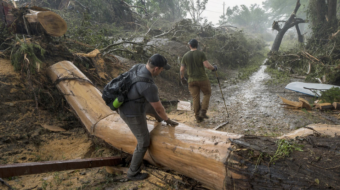
A new study has found that much of the land needed to preserve biodiversity and maintain well-being for humans is lacking protections that would prevent development.
The study, published in the journal Nature Communications, found that about half of all land on Earth needs sustainable management to protect over 26,000 terrestrial vertebrate species. Further, the research reveals that just 18% of this land needed to meet global biodiversity targets is properly protected.
“We face enormous challenges,” Amanda Rodewald, senior author and the Garvin Professor and senior director of the Center for Avian Population Studies at Cornell University’s Lab of Ornithology, said in a statement. “With limited resources available to address climate change, biodiversity loss, poverty, and water insecurity, we must be strategic and find ways to tackle more than one challenge at a time.”
The research maps out some of the most critical areas on earth for both biodiversity and for providing nature’s benefits to humans. The study authors noted that in addition to increasing conservation measures, these measures and climate targets should include more information on how nature and biodiversity benefit humanity.
“Biodiversity, climate, and sustainable development cannot be considered in isolation,” said lead author Rachel Neugarten, lead author of the study and a doctoral student at Cornell University’s Lab of Ornithology. “We must also factor in nature’s contributions to human well-being, including clean water, carbon storage, crop pollination, flood mitigation, coastal protection, and more.”
Of the most critical areas on Earth for biodiversity, about 37% are also valued for development opportunities, according to the study. Conflict could arise over these land areas, which could be developed for agriculture, energy (both renewable and non-renewable), and mining. These areas are also at risk from urban development projects.
The authors wrote in the study that while renewable energy projects are necessary to curb the worst impacts of climate change, these types of projects will need to be carefully planned and implemented in a way that minimally disrupts areas that need more conservation protections.
“If designed carefully, renewable energy development can be compatible with biodiversity conservation and ecosystem services to people,” Neugarten said. “Examples of this include livestock grazing under wind farms or cultivating native pollinator gardens under solar panels. But there’s a real risk that achieving renewable energy goals could conflict with nature conservation goals without careful planning.”
This article was reposted from EcoWatch.
We hope you appreciated this article. At People’s World, we believe news and information should be free and accessible to all, but we need your help. Our journalism is free of corporate influence and paywalls because we are totally reader-supported. Only you, our readers and supporters, make this possible. If you enjoy reading People’s World and the stories we bring you, please support our work by donating or becoming a monthly sustainer today. Thank you!










